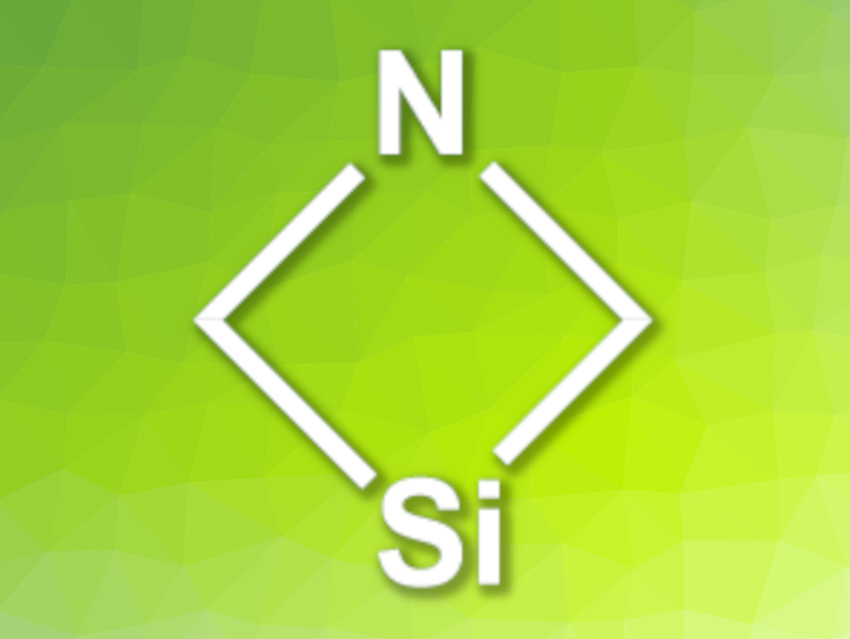Strained, small, three- or four-membered silacycles are useful in organic synthesis. In contrast, nitrogen-containing four-membered silacycles, such as 2-silaazetidine and 3-silaazetidine (pictured), are challenging to prepare and air-sensitive. This severely limits their use in synthesis.
Zhenlei Song, Sichuan University, Chengdu, China, and colleagues have prepared 3-silaazetidines in situ from air-stable precursors and used them in the synthesis of larger silaazacycles via a ring expansion. The team used precursors of the type TsNHCH2–SiR2–CH2Cl (Ts = toluenesulfonyl) with a variety of alkyl or aryl substituents at the silicon atom and converted them to the corresponding 3-silaazetidines using DBU (1,8-diazabicyclo[5.4.0]undec-7-ene) as a base. These in-situ-formed 3-silaazetidines were reacted with terminal alkynes in a palladium-catalyzed ring-expansion reaction to give 3-silatetrahydropyridines. The team used Pd(PPh3)2Cl2 as the catalyst, ZnI2 as an additive, and xylenes as the solvent.
The desired 3-silatetrahydropyridines were obtained in moderate to good yields. The precursors can be synthesized on a gram scale and the 3-silatetrahydropyridine products could be further functionalized to obtain a variety of silaazacyclic compounds. The researchers hope that access to the reactive 3-silaazetidines could allow their use in other organic syntheses.
- 3-Silaazetidine: An Unexplored yet Versatile Organosilane Species for Ring Expansion toward Silaazacycles,
Wanshu Wang, Song Zhou, Linjie Li, Yuanhang He, Xue Dong, Lu Gao, Qiantao Wang, Zhenlei Song,
J. Am. Chem. Soc. 2021.
https://doi.org/10.1021/jacs.1c04667




